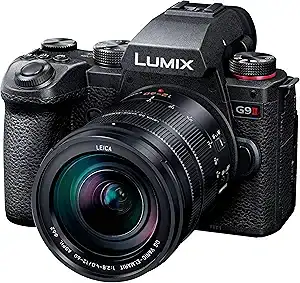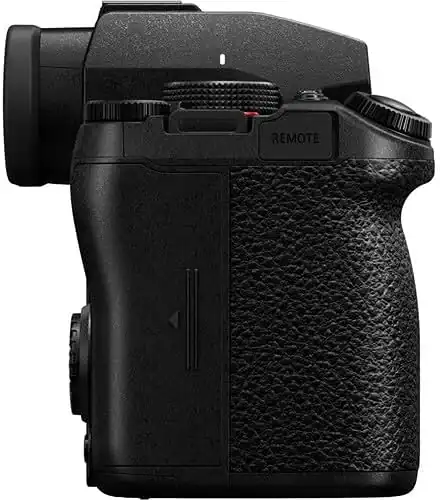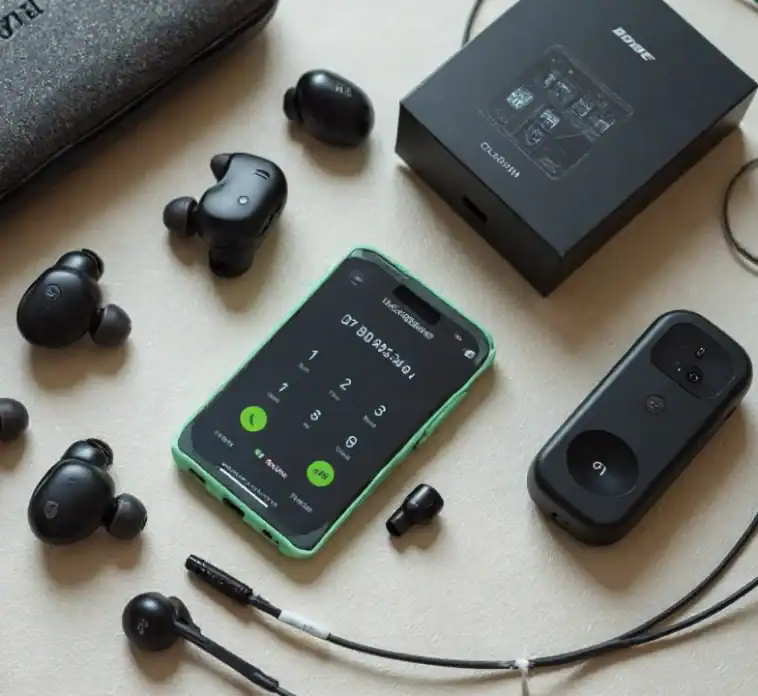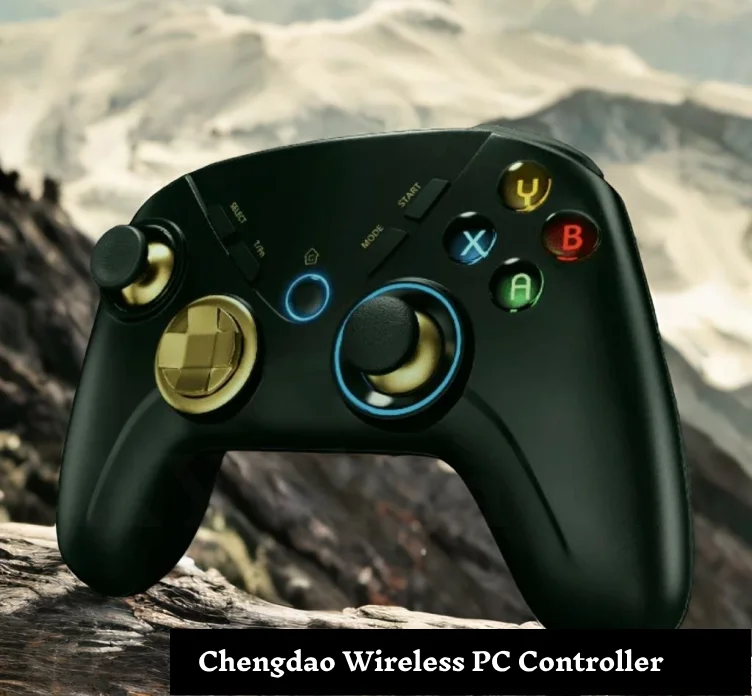Panasonic has finally done it. The wait is over. The famous Lumix G9 has a new version. This camera is a huge step up. It adds some cool new tech to the Micro Four Thirds world. It was made for photographers, but its video power will blow your mind.
People loved the original Panasonic G9 for taking pictures of animals and still life. The new G9 II takes that spirit and makes it completely new. It takes the best features from Panasonic’s full-frame S series. This includes a body that is professional quality and, most importantly, a brand-new autofocus system. This review of the Lumix G9 II will tell you everything you need to know.
A Body You Know: The Lumix S5 II Connection

This camera will look like the Panasonic Lumix S5 II if you’ve seen it. The G9 II has the same body. Panasonic made a great choice here. People say the Lumix S5 II has great ergonomics. Micro Four Thirds users can now get that same professional look and feel.
- Build and Feel: The camera feels strong and sturdy. It is taller and has more square edges than the first Panasonic G9. It feels like a real tool in your hands.
- Controls: The way the buttons are laid out is great. You can get to everything easily.
The fact that it has the same design as the Lumix S5 Mark II is a big plus. It makes for a comfortable and professional experience. The body is sealed against the weather. You can shoot with confidence even when things are hard. It really is an improvement in how it handles compared to the last one.
The Most Important News: Phase Detection Autofocus is Here
This is the feature that everyone has been waiting for. The Panasonic Lumix G9 II is the first camera in the Lumix G series to have Phase Detection Autofocus (PDAF). This changes the game. Panasonic used a system called DFD for a long time. DFD was good, but it could sometimes “pulse” or look for focus in video.
This is not the same as phase detection. It goes faster. It is more certain. It is more dependable.
- Tracking Subjects: The new AF system is amazing. It can lock onto things and follow them. It has better subject detection. It can tell people apart, see their faces, and see their eyes. It also keeps an eye on cars, motorcycles, birds, and animals.
- For Stills: This is a dream come true for wildlife and sports photographers. You will miss fewer shots. The focus just works.
- For Video: The annoying focus pulsing is gone. The Panasonic G9 II lets you pull focus smoothly and confidently. It follows subjects perfectly when you record video. This makes it a much better tool for people who make videos.
The Lumix G9 II is now a top competitor thanks to PDAF. It now goes head-to-head with the best cameras for beginners and professionals alike. A lot of photographers will read the reviews of the Panasonic G9 II just to see this feature. It’s that important.
New 25.2MP Sensor: Improves Image Quality

The G9 II has a new Micro Four Thirds sensor with 25.2 megapixels. This new sensor makes pictures look great.
- Detail and Resolution: The pictures are clear and detailed. For a Micro Four Thirds camera, the resolution is great. You can crop your pictures a lot.
- Dynamic Range: The sensor has a very wide dynamic range. This helps you get back information from shadows and highlights.
- Color Science: Panasonic’s color science is both beautiful and correct. This lets you add creative color effects right in the camera.
- High-Resolution Mode: Want more detail? There is a handheld High-Resolution mode on the G9 II. It takes a lot of pictures and puts them all together into one huge 100MP file. This is great for studio work or landscapes.
The Panasonic G9 II takes pictures that are of the highest quality. It shows that the Micro Four Thirds format is still very powerful.
Action Speed and Performance
People liked the original Lumix G9 because it was fast. The G9 II takes this to a whole new level.
- Incredible Burst Rates: The G9 II can take up to 60 pictures per second. This is with autofocus that keeps going (AF-C). You can take the perfect picture in any scene that moves quickly.
- Pre-Burst Shooting: This is a great feature. The camera starts taking pictures before you fully press the shutter. You can get pictures of things you would have missed.
- Large Buffer: The camera has a big buffer. This means that the camera won’t slow down when you take long bursts. It has two UHS-II SD card slots that are very fast.
The Lumix G9 II is one of the best 4K cameras for taking pictures of animals, birds, and sports because it works so well. The new PDAF system and speed together are just amazing.
Video Power That Surprises: A Real Hybrid Camera

Panasonic calls the G9 II a stills-first camera, but the video features are really amazing. It gets a lot of its video features from the Panasonic Lumix S5 II and S5IIX, which are both focused on video.
Some of the best video features are:
- 5.7K Internal Recording: You can record in stunning high definition.
- 4K Up to 120p: This lets you make beautiful slow-motion videos.
- Open Gate Recording: The camera can record using the whole sensor area. This gives you the most freedom to change the framing of your video for different aspect ratios, like YouTube and TikTok.
- Apple ProRes: You can record directly to Apple ProRes codecs inside the camera. This is a very important feature for professional video work.
- V-Log Profile: It has Panasonic’s V-Log profile, which gives you the most dynamic range and color grading options.
The G9 II’s video features are better than those of many video cameras made just for that purpose. This machine is a real hybrid. This camera is a great deal for photographers who also need to shoot high-quality video. It works like a high-end still camera and a high-end video camera in one.
Important Comparisons
How does the G9 II compare to other cameras?
Panasonic G9 II vs. Lumix G9
The G9 Mark II is a great upgrade if you love your original G9. We liked the original Lumix G9, but this new model is even better.
Panasonic G9 II vs. Panasonic Lumix S5 II
This is a fun comparison. They have the same body. The S5 II will work better in very low light. It can also make the depth of field shallower. Telephoto lenses also give you more “reach,” which is great for taking pictures of animals. The G9 II is also faster when taking pictures in bursts.
Panasonic G9 II vs. Other Brands
The G9 II is now in direct competition with the best from other brands. Its new autofocus system makes it as good as cameras like the OM System OM-1. When comparing DSLR vs mirrorless cameras, the G9 II stands out as a premium mirrorless option. The choice will depend on how comfortable they are and what features they have.
Who Should Get the Panasonic Lumix G9 II?

A lot of people will love the G9 II camera.
- Wildlife and Sports Photographers: This is a great choice because it has a fast shutter speed, a long telephoto reach, and a great new autofocus system.
- Hybrid Shooters: The G9 II is one of the best cameras on the market right now for taking both professional photos and professional videos.
- People Who Already Use Micro Four Thirds: This is the upgrade you’ve been waiting for. It adds the best new technology to the MFT system.
- Travel and Adventure Photographers: The powerful features in a body with smaller, lighter lenses make it a great camera to take on trips.
Rock-Steady Shots: The Best Image Stabilization in Its Class
Panasonic’s image stabilization has always been great. The in-body image stabilization (IBIS) is just amazing. This means you can take pictures by hand with very slow shutter speeds. You don’t need a tripod to take clear pictures.
- Dual I.S. 2: The system works even better when you use it with a Lumix lens that works with it. The lens’s optical stabilization and the camera’s IBIS work together. This is known as Dual I.S. 2. It makes a platform that is very stable.
- Active I.S. For Video: For video shooters, there is a new Active I.S. mode. This technology comes from the Panasonic S5 II and gives you strong electronic stabilization. It makes shots of people walking and talking look very smooth. It feels a lot like using a gimbal.
This strong stabilization is a big plus. It works for videos and pictures. It lets you be more creative. This makes the G9 II a great tool for creators who are always on the go.
A Closer Look at Ergonomics and Handling
Let’s investigate what that means for you. The handling is great. The camera feels stable and balanced in your hand.
- The grip holds securely, even with bigger telephoto lenses. This makes long shooting sessions much better.
- The controls are all in the right places. There is a special joystick for moving your focus point. On the back, there is a second control wheel. You can control everything without taking your eyes off the viewfinder.
- Good Screen and Viewfinder: The electronic viewfinder (EVF) is big and bright. It has a high resolution, which makes it fun to use.
- The touchscreen on the back LCD screen can move in all directions. You can turn it around to face forward for vlogging. You can also tilt it to get shots from above or below.
The button layout is carefully thought out so that you can use it quickly. This body is made for professional photographers and videographers, just like the well-known Panasonic Lumix S5 II.
The Micro Four Thirds Advantage: Why Pick the G9 II?
Why choose the Micro Four Thirds G9 II when it has the same body as the full-frame Lumix S5 Mark II? The answer is in the system’s main strengths.
- Telephoto Reach: The Micro Four Thirds sensor has a 2x crop factor, which gives it an unmatched telephoto reach. This means that on a full-frame camera, a 300mm lens works like a 600mm lens. This is a huge benefit.
- Size and Weight: Lenses for the Micro Four Thirds system are much smaller and lighter. They are also usually cheaper than full-frame cameras. It will be much easier to carry the G9 II all day if you have a full kit.
- A Complete System: The Micro Four Thirds lens ecosystem is big and well-developed. Panasonic, OM System/Olympus, and other companies make high-quality lenses.
The Panasonic S5 II may be better in very low light, but the Lumix G9 II is perfect for many photographers because it has a unique mix of reach, speed, and portability.
Unleash Your Creativity: Real-Time LUTs and More
The Panasonic Lumix G9 II isn’t just a powerful camera. It also has tools that can help you be more creative.
A LUT file changes the colors in your image. People who work in the industry use them after the fact. You can put your LUTs into the G9 II camera. You can then use these creative looks on your videos and photos as you take them.
You can see how it will look in the viewfinder. You can also record the flat V-Log footage at the same time to edit later. This feature comes straight from the Lumix S5IIX, which is made for movies. It gives you a lot of creative freedom.
Are There Any Problems to Think About?

There is no such thing as a perfect camera. It’s important to see the whole picture. A lot of Panasonic G9 II reviews will talk about its good points, but there are a few things to think about.
- Size: The G9 II is bigger than most Micro Four Thirds cameras. This is because it has the full-frame Panasonic S5 II body. If your main goal is to get the smallest camera possible, other MFT models might be a better choice.
- No Top LCD: The original Panasonic G9 had a top-plate LCD that was useful for checking settings. Some people might miss the top screen.
- Low Light Performance: The Micro Four Thirds sensor is very good for its size, but it won’t gather as much light as a larger full-frame sensor. When it’s dark, a camera like the Lumix S5 II will take clearer pictures at high ISOs.
Most users won’t mind these things. They are just trade-offs for the G9 II’s great features, like its amazing speed and long telephoto reach.
Frequently Asked Questions About the Lumix G9 II
Is the Panasonic Lumix G9 II good for making videos?
Is the body of the G9 II the same as that of the Lumix S5 II?
Is the G9 II's autofocus a big step up?
Is it worth it to upgrade from the original Lumix G9?
Conclusion: A New Standard
Panasonic has made a statement. They are completely committed to the Micro Four Thirds format. The biggest problem with earlier Lumix G models has been fixed by adding phase detection autofocus.
It was smart to choose the Lumix S5 II body. It has ergonomics that are second to none. The speed is amazing. The picture quality is great. And the video features are much better than what you would expect from a camera that only takes stills.
The Panasonic G9 II is the best all-around Micro Four Thirds camera you can buy. It’s a strong, dependable, and inspiring tool for anyone creative. It is the new king.




















![Sennheiser HD 450BT Review: Worth It in 2025? [Pros & Cons]](https://img.xyultra.com/spai/ret_img,q_cdnize,to_webp,s_webp/xyultra.com/wp-content/uploads/2025/07/Sennheiser-HD-450BT-Review.webp)




